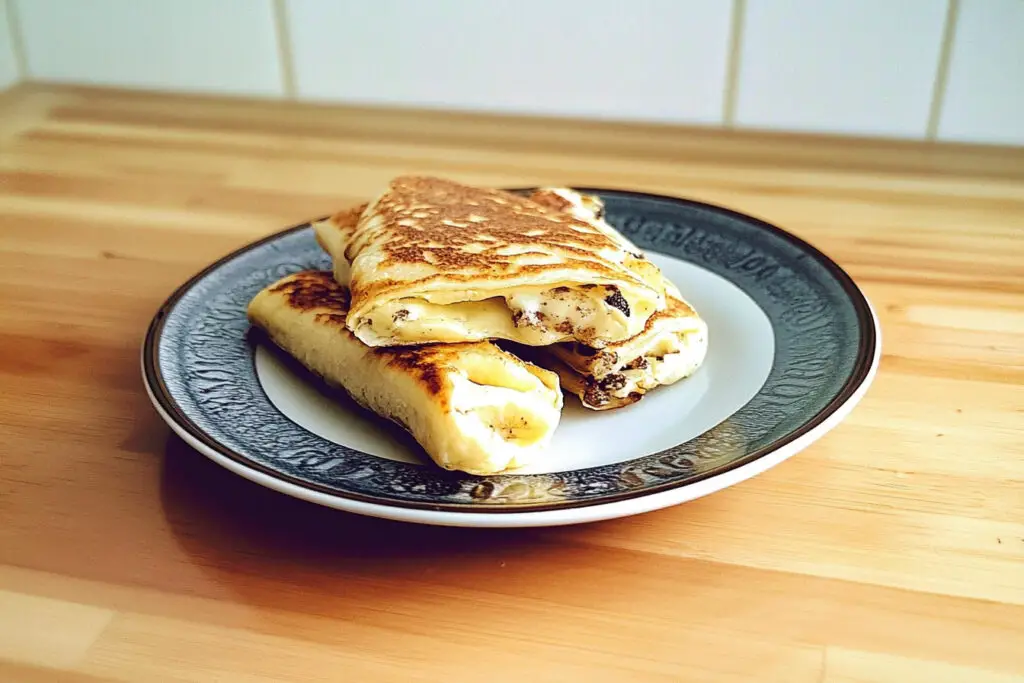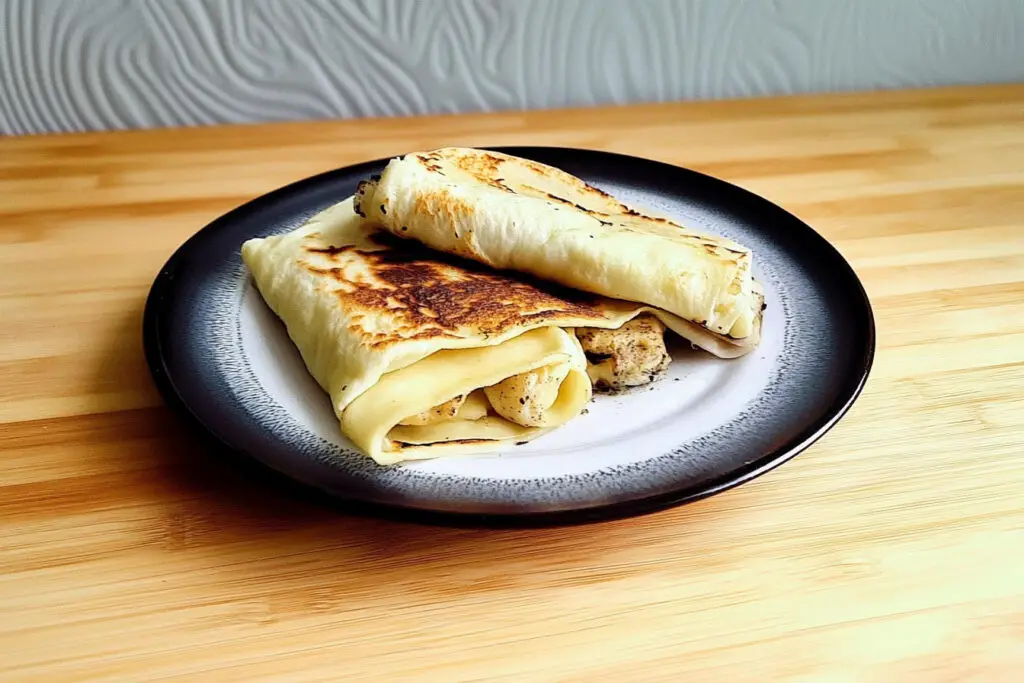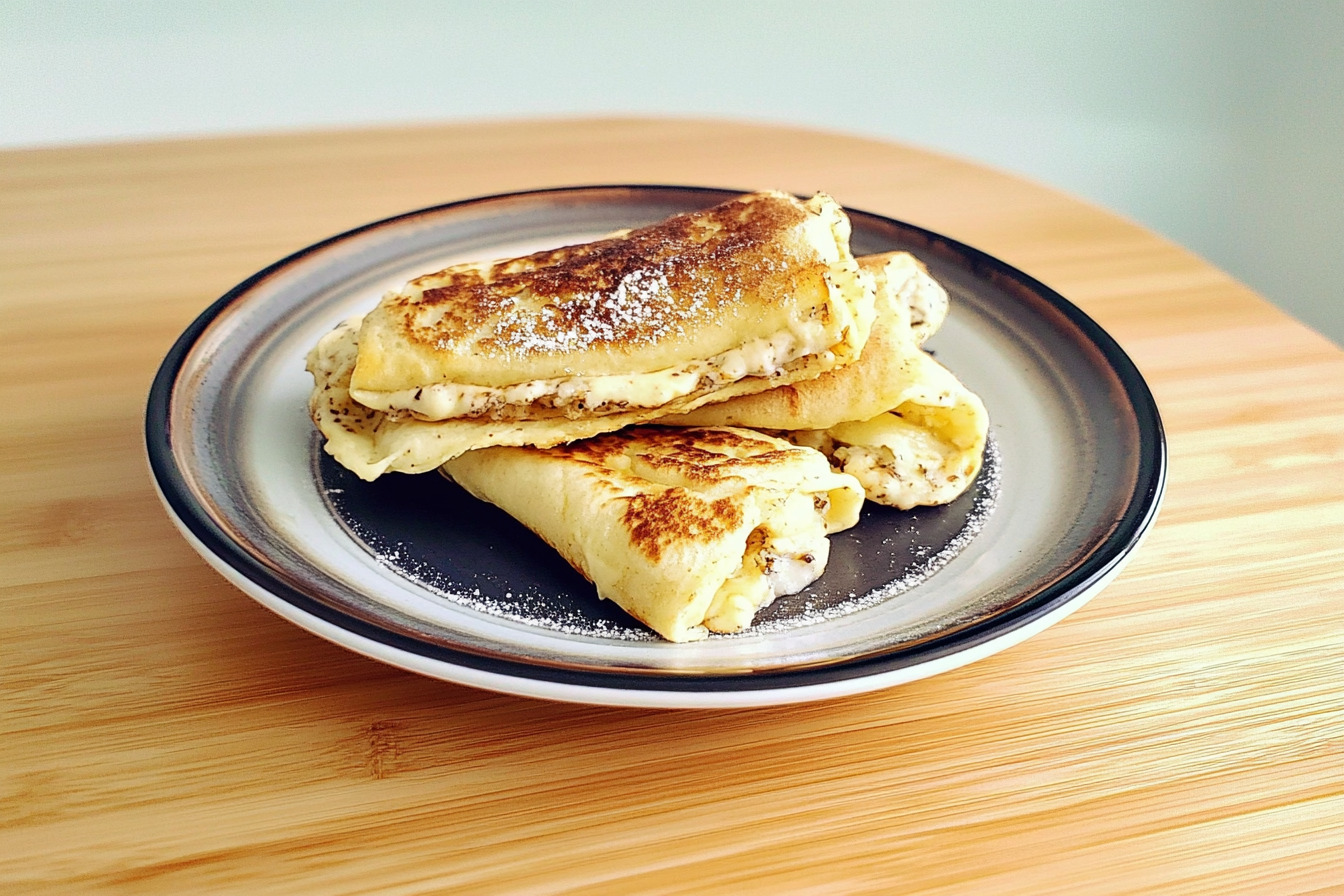Table of Contents
Introduction to Quesillo Nicaragua
Quesillo, one of Nicaragua’s most beloved culinary treasures, is a simple yet flavorful dish that captures the heart of the country’s gastronomic culture. Literally translating to “little cheese,” quesillo is far more than its name suggests. This savory delight, made from fresh cheese wrapped in a soft tortilla, represents a blend of local ingredients, traditional techniques, and cultural pride. Whether you’re a local or a visitor, enjoying a quesillo is an experience that reflects the warmth and richness of Nicaraguan hospitality.
The History of Quesillo Nicaragua
Origin and Cultural Significance
Quesillo originated in Nicaragua’s heartlands, emerging as a practical yet satisfying meal for farmers and laborers. Made from locally produced cheese and fresh tortillas, quesillo was both an affordable and portable snack. Over time, its simplicity and taste won the hearts of Nicaraguans, turning it into a culinary icon. Today, quesillo is not just a dish; it’s a cultural emblem that showcases the creativity and resourcefulness of Nicaraguan cuisine.
Quesillo deeply intertwines with the daily lives and traditions of Nicaraguans. It is a dish that brings people together, whether enjoyed at roadside stands, bustling markets, or family gatherings. The act of savoring a quesillo, often with a cold drink or freshly made cacao, is a ritual that celebrates community and tradition.
Evolution of the Dish Through Time
While quesillo remains rooted in its traditional form, it has evolved to incorporate regional variations and personal touches. In its simplest form, quesillo consists of a fresh tortilla, a slice of quesillo cheese, and a dollop of cream. As the dish gained popularity, cooks introduced ingredients like pickled onions, a dash of salt, and a splash of tangy vinegar to enhance its flavor.
Modern quesillo vendors, particularly in cities like León and Managua, have also adapted the dish to cater to changing tastes. Some offer gourmet versions with different types of cheese, while others experiment with unique toppings or sauces. Despite these innovations, the essence of quesillo—a testament to Nicaragua’s rich culinary heritage—remains unchanged.
Stay tuned as we explore more about the preparation, variations, and where to find the best quesillo in Nicaragua!
What Makes Quesillo Nicaragua Unique?
Quesillo stands out as a culinary masterpiece due to its simplicity, fresh ingredients, and the cultural tradition it represents. It is not just a snack; it’s an authentic expression of Nicaraguan identity, combining humble origins with a flavor that resonates with both locals and visitors. The dish’s uniqueness lies in its delicate balance of texture, flavor, and the traditional techniques that bring it to life.
Ingredients of Quesillo Nicaragua
The hallmark of quesillo’s uniqueness is its reliance on fresh, high-quality ingredients, most of which are locally sourced. These include:
- Quesillo Cheese: The star of the dish, this fresh, soft cheese is made from cow’s milk. Its mild, creamy flavor and slightly elastic texture make it perfect for the dish.
- Corn Tortilla: Handcrafted tortillas, soft and slightly chewy, serve as the vessel for the cheese. The tortillas are typically made from freshly ground corn, a staple of Nicaraguan cuisine.
- Cream (Crema): A rich, tangy topping made from fermented milk, crema adds a smooth and luscious layer to the quesillo.
- Pickled Onions: Thinly sliced onions pickled in vinegar lend a sharp, tangy contrast to the creaminess of the cheese and crema.
- Salt and Vinegar: A pinch of salt and a splash of vinegar enhance the flavors, adding depth and a refreshing zest.
Together, these simple ingredients create a harmony of flavors that exemplifies the charm of quesillo.
Traditional Preparation Methods
The preparation of quesillo is as much a craft as it is a tradition, often passed down through generations. The process typically unfolds as follows:
- Cheese Making: The quesillo cheese is made fresh using local milk. After curdling and pressing, the cheese is shaped into thin, pliable layers ideal for wrapping in tortillas.
- Tortilla Crafting: Tortillas are handmade from masa (corn dough) and cooked on a traditional comal, a flat griddle heated over an open flame. This gives them a slightly charred, smoky flavor.
- Assembly: To prepare quesillo, a warm tortilla is laid out, and a piece of cheese is placed in the center. The tortilla is folded or rolled around the cheese, creating a neat package.
- Adding the Toppings: Once the cheese and tortilla are assembled, crema is drizzled generously over the top, followed by a handful of pickled onions. Finally, a sprinkle of salt and a splash of vinegar complete the dish.
- Serving: Quesillo is traditionally served fresh, often wrapped in wax paper or plastic to keep it warm and easy to eat. It’s commonly enjoyed with a cold drink, such as a glass of fresh cacao or a soft drink.
The combination of artisanal ingredients and time-honored preparation methods gives Quesillo Nicaragua its distinctive taste, texture, and cultural significance. It’s a dish that is as much about the journey of its creation as it is about the joy of eating it.

Step-by-Step Guide to Making Quesillo Nicaragua
Making Quesillo Nicaragua at home is a rewarding experience that allows you to immerse yourself in the authentic flavors of Nicaragua. By following these steps, you can create a dish that pays homage to its traditional roots while enjoying the satisfaction of crafting it yourself.
Essential Tools and Ingredients
Tools:
- Comal or Griddle: For cooking tortillas.
- Cheesecloth: For straining and shaping the cheese.
- Mixing Bowl: To prepare the masa (corn dough).
- Rolling Pin or Tortilla Press: To shape the tortillas.
- Knife and Cutting Board: For slicing onions and preparing other toppings.
Ingredients:
- Fresh cow’s milk for making Quesillo Nicaragua cheese.
- Corn masa or masa harina (corn flour).
- Pickled onions.
- Crema (fermented milk cream).
- Salt and vinegar for seasoning.
Preparing the Cheese
- Heat the Milk: Start with fresh cow’s milk and gently heat it in a pot until it reaches around 85°F (30°C).
- Add Rennet: Stir in rennet or another curdling agent and let the milk rest until it forms curds.
- Separate the Curds: Using a knife, slice the curds into small pieces and strain the whey through a cheesecloth.
- Shape the Cheese: Press the curds into a flat, pliable form suitable for rolling into the tortilla.
- Cool and Store: Chill the cheese slightly before use.
Crafting the Tortilla
- Prepare the Masa: Mix masa harina with water and a pinch of salt until it forms a pliable dough.
- Shape the Tortillas: Divide the dough into small balls, then flatten them with a tortilla press or rolling pin.
- Cook on a Comal: Place the tortillas on a hot comal or griddle. Cook each side until lightly browned and flexible.
- Keep Warm: Stack the cooked tortillas and cover them with a towel to retain their warmth and softness.
Assembling the Perfect Quesillo
- Lay the Tortilla: Start with a warm, freshly made tortilla as your base.
- Add the Cheese: Place a piece of quesillo cheese in the center of the tortilla.
- Top with Crema: Drizzle a generous amount of crema over the cheese.
- Include Pickled Onions: Add a handful of pickled onions for a tangy kick.
- Season: Sprinkle with salt and a splash of vinegar for extra flavor.
- Roll or Fold: Gently fold or roll the tortilla around the filling.
- Serve and Enjoy: Serve immediately, preferably with a refreshing drink like cacao fresco.
Variations of Quesillo
While the traditional quesillo is iconic, regional and modern variations offer new takes on this beloved dish.
Regional Differences in Nicaragua
- León-Style Quesillo: Known for its generous use of crema and pickled onions, this variation is a favorite in the city of León. It’s often served wrapped in wax paper for easy eating.
- Chontales Quesillo: This version uses a slightly firmer cheese and incorporates thicker tortillas, offering a heartier texture.
- Granada Variation: In Granada, quesillo may include additional toppings like avocado slices or a sprinkling of freshly ground pepper for a unique twist.
Modern Twists on a Classic Dish
- Gourmet Quesillo: Contemporary chefs experiment with premium cheeses like mozzarella or ricotta, elevating the dish’s flavor while maintaining its essence.
- Vegan Quesillo: For plant-based eaters, cashew cheese and dairy-free crema are creative substitutes, wrapped in gluten-free tortillas.
- Spicy Quesillo: Adding a touch of chili oil or hot sauce introduces a fiery edge to the traditional recipe.
- Fusion Quesillo: Combining elements from other cuisines, such as adding guacamole or salsa, results in a hybrid dish that’s both innovative and delicious.
Whether you’re making quesillo in its traditional form or exploring its variations, this versatile dish continues to evolve while staying true to its Nicaraguan roots.
The Best Places to Try Quesillo Nicaragua
For anyone visiting Nicaragua, experiencing quesillo in its authentic setting is a must. Bustling street corners and charming restaurants bring quesillo’s essence to life, showcasing its authentic flavors in vibrant settings.
Street Vendors vs. Restaurants
Street Vendors:
- Authenticity: Street vendors are the heart of quesillo culture. Often found in cities like León and Managua, these vendors prepare the dish using time-honored methods.
- Affordability: Quesillo from a street vendor is typically inexpensive, making it accessible to all.
- Freshness: The quesillo is made on the spot, ensuring that every bite is fresh and flavorful.
- Experience: Eating quesillo at a roadside stand often comes with a unique ambiance that enhances the cultural experience.
Restaurants:
- Consistency: Restaurants offer a standardized version of quesillo, ensuring consistent quality.
- Presentation: The dish may be served with additional sides or garnishes, elevating its presentation.
- Variety: Some restaurants offer creative takes on quesillo, incorporating gourmet ingredients or regional flavors.
- Comfort: Dining in a restaurant provides a more relaxed and comfortable setting.
Notable Quesillo Hotspots
- Leche y Miel (León): A famous spot for quesillo, known for its authentic flavors and generous portions of crema and pickled onions.
- La Paz Centro: Located near León, this town is often referred to as the “capital of quesillo,” offering some of the best street-side quesillos in Nicaragua.
- Doña Rosa crafts her renowned quesillos in Managua, celebrated for their soft tortillas and perfectly balanced flavors.
- Tip-Top Cafés: Found in urban centers, these modern eateries serve quesillo with a gourmet twist, catering to tourists and locals alike.
Health Benefits and Nutritional Value
While quesillo is a treat for the taste buds, it also offers several nutritional benefits when consumed in moderation.
Caloric Content and Nutrients
- Caloric Content:
- A typical serving of quesillo contains around 250–350 calories, depending on the portion size and toppings.
- It’s a moderate-calorie dish that can be part of a balanced diet.
- Nutrients:
- Protein: Quesillo cheese provides a good source of protein, supporting muscle repair and growth.
- Calcium: The cheese is rich in calcium, essential for strong bones and teeth.
- Carbohydrates: The corn tortilla offers a source of complex carbohydrates, providing sustained energy.
- Healthy Fats: Crema adds healthy fats that contribute to overall satiety.
- Pickled Onions: These are not only flavorful but also a source of antioxidants and digestive benefits due to their vinegar content.
Comparisons with Other Cheese Dishes
- Quesillo vs. Quesadilla:
- While quesadillas are more popular in Mexican cuisine and often include a variety of fillings, quesillo is simpler and relies heavily on fresh, local ingredients.
- Quesadillas typically have a higher caloric content due to added ingredients like meat or sauces.
- Quesillo vs. Mozzarella Sticks:
- Mozzarella sticks are deep-fried and contain significantly more fat and calories compared to quesillo.
- Quesillo is a fresher, lighter option with fewer processed ingredients.
- Quesillo vs. Caprese Salad:
- Like a Caprese salad, quesillo emphasizes fresh cheese but differs with its use of tortillas and cream, making it heartier and more substantial.
Quesillo strikes a balance between indulgence and nourishment, making it a versatile and delightful addition to any meal or snack.

Pairing Quesillo with Other Foods
Pairing quesillo with the right accompaniments can elevate your experience, blending flavors and textures for a perfect meal. Traditional beverages and complementary sides enhance the dish’s authenticity and appeal.
Traditional Beverages
- Cacao Fresco:
- A chilled, refreshing drink made from cacao, water, and sugar, cacao fresco perfectly balances the richness of quesillo with its light, earthy taste.
- Chicha de Maíz:
- This fermented corn drink, slightly sweet and tangy, is a classic pairing for quesillo and a staple of Nicaraguan street food culture.
- Tiste:
- A traditional blend of toasted corn and cacao, Tiste adds a nutty flavor that complements the creaminess of quesillo.
- Soft Drinks:
- Local sodas or fizzy drinks are often enjoyed alongside quesillo, offering a bubbly contrast to the savory dish.
- Coffee:
- In some regions, a hot cup of Nicaraguan coffee is served with quesillo, creating a comforting combination for breakfast or a midday snack.
Complementary Sides
- Plantain Chips:
- Crispy and slightly sweet, plantain chips add a delightful crunch to the soft textures of quesillo.
- Fresh Avocado:
- Creamy slices of avocado enhance the flavors of quesillo while adding a healthy, nutrient-rich element.
- Salad:
- A light salad with lettuce, tomatoes, and a citrusy dressing can provide a refreshing contrast to the richness of the dish.
- Pico de Gallo:
- This fresh salsa made with tomatoes, onions, and cilantro adds a zesty kick that pairs well with the creamy elements of quesillo.
- Yucca Fries:
- For a heartier meal, yucca fries offer a starchy, satisfying side that complements quesillo’s cheesy goodness.
Common Mistakes to Avoid
While quesillo may seem straightforward, certain missteps in preparation and serving can impact its flavor and authenticity. Avoid these common mistakes to enjoy quesillo at its best.
Errors in Preparation
- Using Stale Ingredients:
- Fresh cheese and tortillas are essential for an authentic quesillo. Using old or processed alternatives diminishes the dish’s flavor.
- Overcooking the Tortilla:
- Tortillas should be warm and pliable, not crispy or dry. Overcooking can make them difficult to fold or roll.
- Skipping Pickled Onions:
- Pickled onions add a tangy balance that is crucial to the overall flavor profile. Omitting them leaves the dish incomplete.
- Undermixing the Masa:
- Properly kneading the masa ensures a smooth, uniform texture for the tortillas. Skipping this step can result in uneven or crumbly dough.
- Using Too Much Crema:
- While crema is essential, excessive amounts can overwhelm the dish and make it too rich.
Missteps in Serving
- Serving Cold Quesillo:
- Quesillo is best enjoyed warm, as the cheese and tortilla are at their most flavorful when freshly prepared.
- Overloading with Toppings:
- Adding too many toppings or sides can overshadow the simplicity and authenticity of the dish.
- Improper Wrapping:
- A poorly wrapped quesillo can spill its contents, making it messy and harder to eat. Take care to roll or fold it securely.
- Delaying Service:
- Quesillo should be served immediately after preparation to maintain its texture and freshness.
- Ignoring Presentation:
- While quesillo is a rustic dish, a little attention to plating can enhance the dining experience, especially when serving guests.
By pairing quesillo thoughtfully and avoiding these common mistakes, you can ensure every bite is as authentic and enjoyable as the dish deserves.
For those who adore exploring regional culinary delights, the rich and creamy quesillo stands out as a Nicaraguan favorite. If you’re curious to try other Latin-inspired dishes, be sure to check out our guide on how to make authentic quesillo, which provides step-by-step instructions for mastering this classic recipe. Additionally, for a delightful comparison, dive into the secrets of perfect Quesillo Venezolano and discover how it differs in preparation and flavor. These recipes not only highlight the nuances of regional dishes but also bring a taste of cultural heritage to your kitchen.
Frequently Asked Questions
What is Nicaraguan cheese called?
Nicaraguans call the cheese commonly used in quesillo ‘quesillo,’ meaning ‘little cheese. It is a fresh, soft cheese made from cow’s milk, known for its creamy texture and mild flavor. Another popular Nicaraguan cheese is cuajada, a slightly firmer, salted cheese often used in other traditional dishes.
How to eat quesillo?
Quesillo is typically eaten as a handheld snack or light meal. Here’s how to enjoy it:
- Unwrap the quesillo carefully to avoid spilling the toppings, especially if it’s wrapped in wax paper or plastic to keep it warm from a street vendor.
- Take small bites, as the soft and slightly messy texture makes this the best way to enjoy it
- Accompany with a Beverage: Pair it with a traditional drink like cacao fresco, or a soda for a full Nicaraguan experience.
- Enjoy Warm: It is most flavorful when fresh and warm, as the cheese and tortilla are at their peak texture.
How many calories are in Nicaraguan quesillo?
A typical serving of Nicaraguan quesillo contains approximately 250–350 calories, depending on the size, amount of cheese, crema, and additional toppings. The dish is moderately calorie-dense, offering a good balance of protein, fats, and carbohydrates, making it a satisfying yet light option.
Conclusion
Quesillo is more than just a dish; it is a cultural icon of Nicaragua that reflects the country’s culinary heritage and love for simple, fresh flavors. From its humble beginnings as a farmer’s snack to becoming a nationally beloved treat, quesillo has earned its place in the hearts of locals and visitors alike. Whether you’re enjoying it from a street vendor, crafting it at home, or exploring modern variations, quesillo remains a true representation of Nicaraguan tradition and hospitality.
So next time you find yourself in Nicaragua—or want to bring a taste of it to your kitchen—be sure to savor the unique experience of quesillo. It’s a journey of flavor, history, and culture in every bite!

